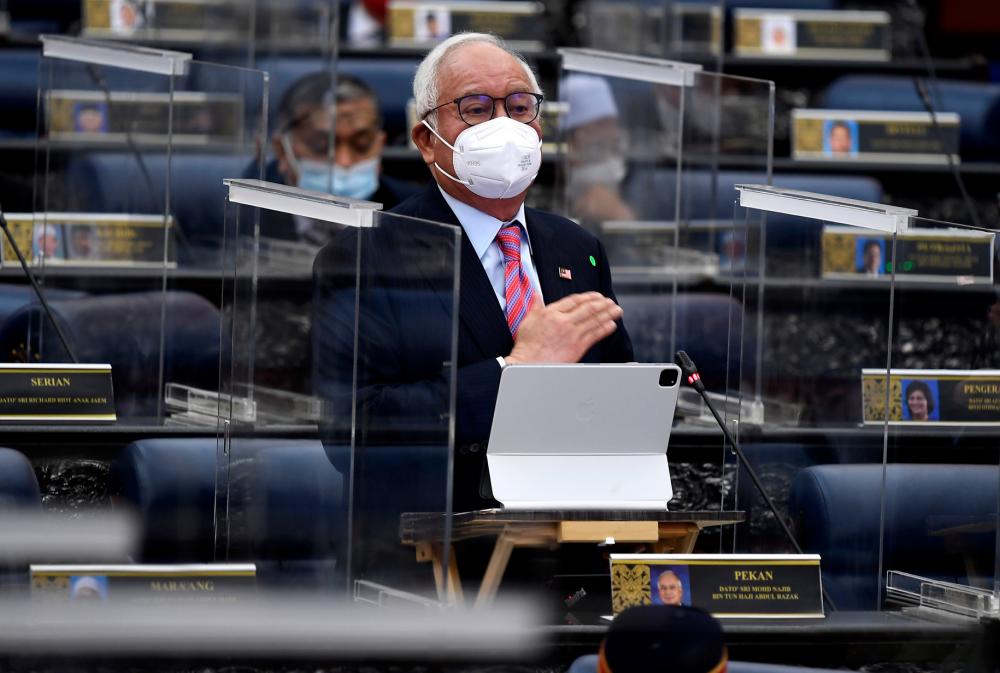
Dr Tan says the forum is meant to assist the public with the best investment strategy
Guidance on investments
Experts to speak on Cryptocurrency at online forum on Nov 6
TWO experienced financial professionals will share their thoughts and analyses at the ‘Investment and Cryptocurrency’ online forum on Nov 6, 2021.
One of them is German-born Mustafa Aydemir who is a senior investment analyst at Saturna Fund Management Company.
He is one of the fund managers licensed by the Securities Commission Malaysia.
Besides being familiar with conventional financial investment, he is also good at Islamic financial investment.
Another speaker is Edgar ‘Jobe’ Gasper, the chief operating officer of SINEGY involved in digital asset trading, which is legal and approved by the Securities Commission Malaysia.
He has extensive practical experience in digital transactions, blockchain technology and cryptocurrency mining operations.
Both of them will conduct in-depth sharing of investment knowledge at the online forum organised by the Malaysian Financial Planning Council (MFPC) Penang Chapter from 9.30am to noon.
MFPC Penang Chapter chairman Dr Tan Chuan Hong said the forum was meant to assist the general public and retail investors to ride out the pandemic crisis with the best investment strategy.
Citing a report from the Malaysian Institute of Economic Research, he said the Government had been utilising large-scale borrowing to assist civilians and small medium enterprises as well as boost the economy since the country was hit by the Covid-19 pandemic almost two years ago.
“This has resulted in a rising debt ratio.
“Up to June this year, the debt ratio exceeded the statutory 60%, reaching 61.1%.
“This has created a lot of concern on whether Malaysia can rapidly recover from this economic crisis.
“Can our stock market this year perform like it did last year when it soared by more than 10% again in just two months? Or is it the end of the bear market?
“To make wise investment decisions, investors need time to collect and analyse the information cautiously,” he said.
Dr Tan said that many still needed more proper education about cryptocurrency investment.
He said many Malaysians had been scammed and lost their money due to inaccurate information obtained online.
“Cryptocurrency investment is originally a high-risk and high-return investment tool.
“Therefore, investors who are blinded by greed for high returns often suffered huge losses,” he said.
On the same day, MFPC executive director Chung Kar Yin, Universiti Sains Malaysia School of Management dean Prof Dr Noor Hazlina Ahmad and Tunku Abdul Rahman College Penang Branch Campus head Assoc Prof Dr Toh Guat Guan will also hold a brief sharing session.
Participants have to fill in the online evaluation form after the session to obtain a certificate of participation and 3CPDs.
Those interested can register online for free.
The public registration link is https://1st.mfpc.org.my/PublicEventRegistration/302 and the MFPC members registration link is https://1st.mfpc.org.my/.
Digital asset exchanges continue to thrive
About 300,000 new accounts created to date
KUALA LUMPUR: Despite market uncertainties following the Covid-19 pandemic, about RM16bil worth of digital assets and cryptocurrencies have been traded in Malaysia between October 2019 and September 2021.
Securities Commission (SC) chairman Datuk Syed Zaid Albar said digital asset exchanges in the country would continue to thrive this year, with about 300,000 new accounts created to date.
“Investor participation in alternative and digital platforms continues to be robust. New digital investment management (DIM) entrants have contributed to the segment’s assets under management growth.
“In fact, compared to last year, our eight licensed DIM holders have opened 90% more DIM accounts from January to July this year,” he said at the SCxSC Fintech Conference 2021.
In addition, Syed Zaid said the increased demand for online brokerage services resulted in close to 35% increase in new accounts opened as of July 2021.
Given the positive developments, he expects the industry to maintain the encouraging growth performance this year.
Meanwhile, Syed Zaid disclosed that equity crowdfunding (ECF) and peer-to-peer (P2P) financing platforms have raised about RM1.3bil since April last year, given the funding needs of micro, small and medium enterprises (MSMEs).
Citing data, he said about RM625mil funds were raised through ECF and P2P in the first half of this year, an increase of 151% and 220%, respectively, from a year ago.
Both platforms attracted young investors, with 60% of participants aged below 35.
Since their inception, 21 ECF and P2P financing platforms have raised about RM2.2bil for nearly 4,000 MSMEs.
Moving forward, the SC said fintech could be the crucial enabler in helping the country to recover as the pandemic had an adverse impact on businesses.
“The SC would seek to drive greater adoption of digital capability to enhance capital formation efficiencies and increase investor participation in the capital market,” added the regulator.
Related:
Mnuchin is investing in blockchain – not crypto | The Star
https://www.thestar.com.my/business/business-news/2021/10/21/mnuchin-is-investing-in-blockchain---not-cryptoRelated posts:
Blockchain: Internet of Value/ Currency of Trust; Private cryptocurrency a misallocation among blockchain technology, say research & economist
Blockchain Festival & Conference Week, Kuala Lumpur 26~27 Sept 2018

Jack Ma Embraces Blockchain for Ant But Warns of Bitcoin Bubble
President Xi’s Blockchain Push Triggers Frenzy in China Technology Stocks

 Representations of cryptocurrencies Bitcoin, Ethereum, DogeCoin, Ripple,
Litecoin are placed on PC motherboard in this illustration taken, June
29, 2021. REUTERS/Dado Ruvic/Illustration
Representations of cryptocurrencies Bitcoin, Ethereum, DogeCoin, Ripple,
Litecoin are placed on PC motherboard in this illustration taken, June
29, 2021. REUTERS/Dado Ruvic/Illustration















